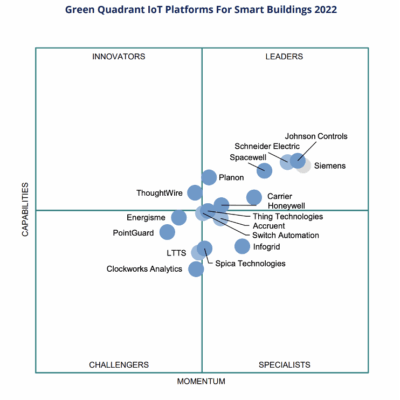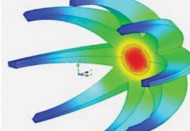Enlighted, A Siemens Company has publicly released a partial version of Verdantix’s new whitepaper, Green Quadrant: IoT Platforms for Smart Buildings 2022.
Research
New Research Establishes UV Wavelength, Dose, & Duration To Deactivate COVID Virus
In a newly published study, researchers from Binghamton University’s Thomas J. Watson College of Engineering and Applied Science answer many of the questions about UV disinfection of the virus that causes COVID-19, and lay the foundation for health standards about what offers true disinfection.
Energy + Environment, Research
Health and Wellness Strategies Complement Resilience & Sustainability
The COVID-19 pandemic showed just how important focusing on health and wellness is (and will be) for facility managers and construction professionals. A new report from the Urban Land Institute titled “Greening Buildings for Healthier People” examines all the ways resilience, health and wellness, and sustainability match up.
US EIA Releases 2020 RECS Housing Characteristics With Some Lighting Use Data
The US EIA that releases the data is part of the US DOE. The 2020 Residential Energy Consumption Survey (RECS) provides household characteristics and energy usage indicators for the estimated 123.5 million homes in the United States in 2020.
Light-Operated Computer Chip Implements All 5 Basic Logic Operations Without Electricity
The demand for next-generation computers that can quickly calculate and process a lot of information is rapidly increasing. A logic device is a circuit that obtains an output value by applying one or more logic inputs to certain logic operation (AND, OR, etc.). A logic circuit can be made by combining a plurality of electronic transistors.
Circadian Lighting Pioneer Says The Science Isn’t Ready Yet
Mark Halper has an interesting article in LED’s Magazine interviewing Russell Foster, the scientist who predicted the non-visual receptors in the eye that are involved in the circadian response to light (pRGCs / ipRGCs). He says circadian lighting science isn’t ready yet, and there are too many unknowns.
UK-Funded Study Publishes “Consensus View” For Circadian Lighting Recommendations
On March 17th, 18 circadian lighting researchers published a “consensus view” of circadian lighting recommendations, titled: Recommendations for daytime, evening, and nighttime indoor light exposure to best support physiology, sleep, and wakefulness in healthy adults, in the journal PLOS Biology. The authors include well-known circadian lighting researchers, George Brainard and Steven Lockley.
Two New Sleep Studies Show Impacts Of Light On Young Children and Adults
Two new studies, one on young children, the other on adults, suggest detrimental health effects of light at night.
LRC Proposes Two Metrics To Predict LED Product Life
Arguably, the biggest gap in LED metrics is a product lifetime metric and test procedure. Currently, the industry is rife with fraudulent emitter life claims used as LED system product life claims (lamps, luminaires, and engines).
DOE Publishes Research On Connected Lighting Systems Challenges & Opportunities
In September 2021, the US Department of Energy (DOE) published a research study about how users and stakeholders engage with connected lighting systems (CLS) and make decisions during each step in the supply chain process, from production to operation, in commercial buildings in the United States.
















